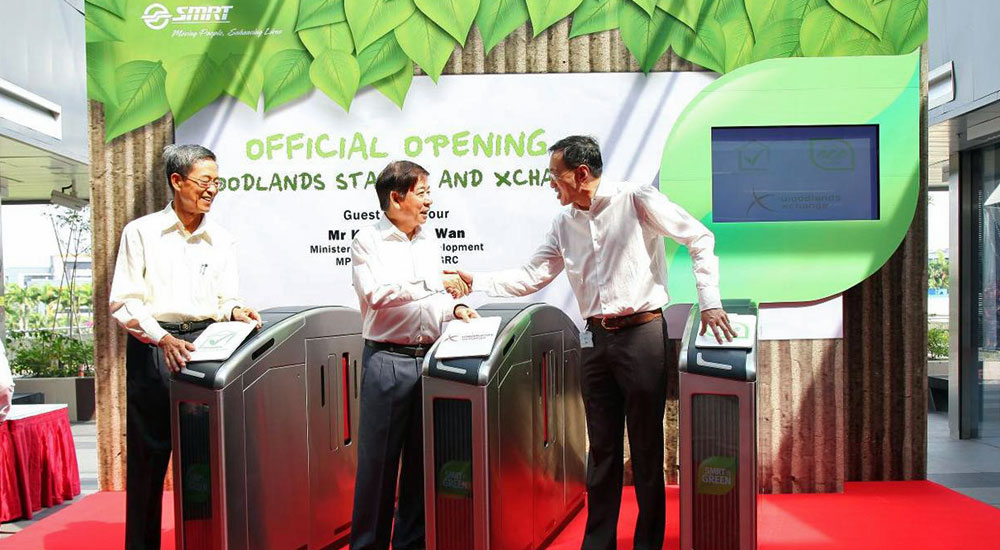Editor's Note, Oct. 19, 5pm: This article has been updated and corrected following feedback from a spokesman from Temasek Holdings.
Very few people are going to say this publicly, so here goes: SMRT Corp is a weird entity.
But because it is a company derived from the Singapore way of doing things, it might appear normal.
However, it is not.
Here's why.
One year after delisting
SMRT was delisted from the Singapore Exchange on Oct. 31, 2016. That was almost one year ago.
It was listed for 16 years.
Once delisted, SMRT was freed from the short-term pressures of meeting shareholders' expectations.
The delisting was also to enable SMRT to focus on serving the public, without the distractions of being a listed company.
So, the next question to ask is: Did delisting nationalise SMRT or privatise it?
The answer is: Depending on how you see it.
Privatised or nationalised?
The main shareholder of SMRT now is state investment firm Temasek Holdings, which bought out the corporation.
SMRT also sold its operating assets to the Land Transport Authority (LTA) to become an asset-light company in the so-called New Rail Financing Framework.
LTA is, therefore, the manager of all of Singapore's rail projects.
This means that SMRT as the transport operator cannot answer questions about infrastructure because it is not involved in the construction stage.
It is, however, responsible for maintaining the operating assets and is audited by the regulator, which is LTA.
Part of the state?
Still with me? Good.
With delisting, the lines are much clearer. Sort of.
Whatever future dividends SMRT issues will go to Temasek, which today fully owns the company.
Since Temasek is a state vehicle, in effect, the dividends which SMRT issues are returned to the people of Singapore.
Temasek pays dividends to the Finance Ministry, and the money is used to fund public projects.
Naturally, everybody in Singapore feels they are a stakeholder in MRT as a result.
Moreover, under the new rail financing framework and government bus contracting system, taxpayers who are wealthier subsidise services used by the masses.
Previously, SMRT had been paying half of its net earnings as dividends to shareholders. This has led to accusations that it had been enriching its shareholders at the expense of commuters.
But, moving forward, SMRT's margins are going to be smaller.
With delisting, its margin, a.k.a. earnings before interest and taxes, is capped at 5 percent in the new framework -- lower than its historical margins.
But behaving like a privately-held entity?
Are you still following. Great. Let's proceed.
Delisting also means SMRT is less transparent to the general public.
It is no longer required to publish its quarterly financial results and remind the public how much profit it makes, in the midst of fare increases.
The remuneration of executives will no longer be unnecessarily revealed as there is no requirement to declare it.
Temasek Holdings will also no longer have to share SMRT's future returns with other shareholders.
But SMRT still shares monthly statistics on its corporate website on the performance of the rail system, including financials every six months. It also has the Train Operations Review available to the public.
Moreover, SMRT's future earnings will still be largely dependent on fares from the public and be subjected to approval by the Public Transport Council.
Anyway, SMRT is accountable to LTA the regulator no matter what -- as the Oct. 16, 2017 joint media briefing showed, SMRT and LTA have an outstanding uneasy relationship.
If anything goes wrong, SMRT executives and the transport minister Khaw Boon Wan would have to come out to apologise and bow.
To make matters more complicated, for the regulator (LTA) to resort to a system of fines to penalise the operator (SMRT) would essentially be a disservice to the public.
This would take away resources from the company that needs it badly to fix its problems in what is essentially an allocation of resources game.
So, what did delisting do for SMRT?
The verdict one year after delisting: Taken to its logical conclusion, delisting did nothing to radically re-calibrate SMRT internally culture- and resource-wise to remove systemic flaws in SMRT. The train tunnel in Bishan still got flooded.
Perhaps more time is needed or maybe the public should start getting used to the fact that train systems are only going to get older and more fault-prone.
Being listed or delisted is probably not so much the crux of the problem.
Because a listed entity, for example, Hong Kong's MTR Corp, can be an excellent public transport operator.
Maybe the problem is that it can never be solved.
Apologies and some bowing have set the precedent this time.
But what would it be the next time another major fault occurs?
[related_story]
By the way, this topic is not new. It has been written about extensively here, here, here and here.
Top photo via SMRT
If you like what you read, follow us on Facebook, Instagram, Twitter and Telegram to get the latest updates.
